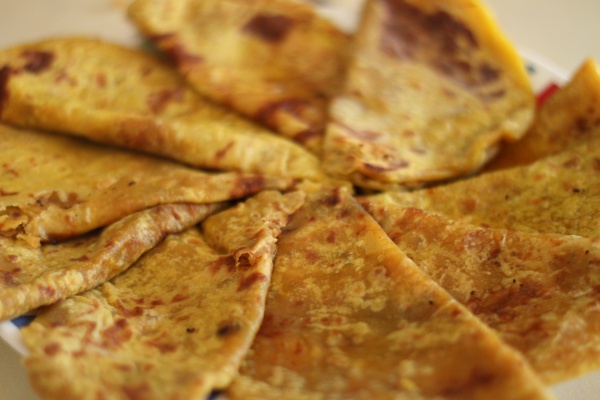Facts About Puran poli
Puran Poli is a beloved Indian sweet flatbread known by various names across different regions of India. Depending on the locale, you might hear it referred to as Holige, Obbattu, Puran Puri, Vedmi, Uppittu, Baksham, Bobbattu, Oliga, Pole, Ubbatti, or simply Poli. This dish boasts a rich history, with its recipe even being mentioned in the 14th-century Telugu encyclopedia "Manucharitra."
The fundamental ingredients for Puran Poli include channa (chickpeas), plain flour, jaggery or cane sugar, cardamom powder, nutmeg powder, ghee, and water. However, regional variations abound. Some recipes incorporate toor dal, moong dal, or a blend of these lentils. Additionally, you might find extra ingredients like nuts, dates, and turmeric powder in certain versions.
Nutritionally, Puran Poli is a wholesome treat. Channa provides fiber, protein, and essential minerals such as zinc, folate, and calcium. The plain flour, jaggery, and sugar contribute carbohydrates, making it a well-rounded dish.
The preparation and flavors of Puran Poli can vary significantly from one region to another. In Karnataka, for instance, you’ll find different types of Holige like Kadle Bele Holige (chickpea), Kobbari Holige (coconut), Shenga Holige (peanut), and Sakkare Holige (sugar). In Maharashtra, Puran Poli is a must-have during festivals like Ganesh Chaturthi and Holi, often paired with Basundi, Aamras, or Kadhi. Down south in Tamil Nadu and Kerala, the dish is known as Opputtu, a golden-yellow sweet pancake enjoyed during traditional meals.

 India
India